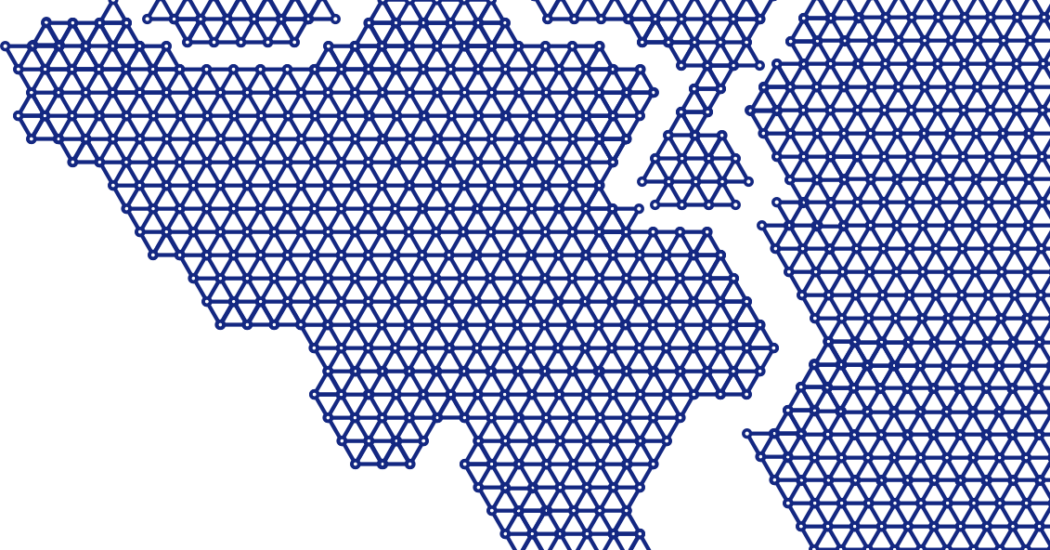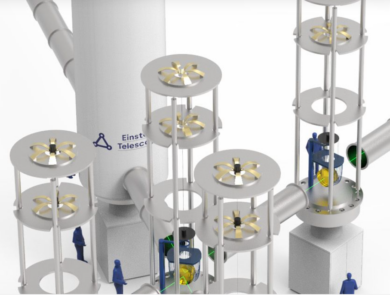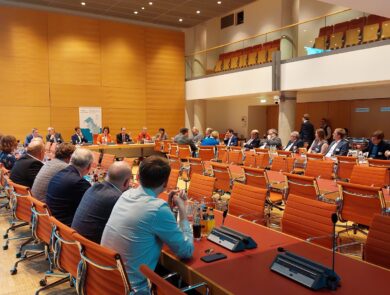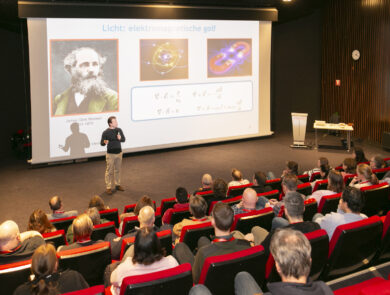The E-TEST project: The Euregio Meuse-Rhine prepares for the Einstein Telescope

Today the online kick-off meeting of the project E-TEST takes place. The project is supported and funded by the European Union through its Interreg V-A EMR programme, and coordinated by scientists from the University of Liège. With a budget of 15 million euros, this project aims to enable the consortium to carry out initial studies on the subsoil of the proposed location for the telescope, in the border area of the three countries (Euregio Meuse-Rhine), and to build a prototype – never built before – of a large suspended mirror at cryogenic temperature.
Press release – 9 October 2020 – On the occasion of the online kick-off meeting of the Interreg V-A EMR E-TEST project
The E-TEST consortium consists of 11 partners: ULiège, Fraunhofer ILT, RWTH Aachen, Universiteit Hasselt, KULeuven, Nikhef, UniBonn, NMWP, KNMI, Maastricht Universiteit and UCLouvain.
The Kick-off event of the E-TEST project, planned for spring and postponed due to the coronavirus crisis, was held online on 9 October 2020. 150 Belgian, Dutch and German scientists and companies attended the meeting.
The E-TEST project is carried out within the framework of the Interreg V-A Euregio Meuse-Rhine Programme, with 7.5 million euros from the European Regional Development Fund (ERDF). The other half of the funding comes from Wallonia, the Flemish Region, the Province of Belgian Limburg, the Province of Flemish Brabant, North Rhine-Westphalia, the Province of Dutch Limburg and the Dutch Ministry of Economic Affairs, as well as from the project partners’ own funds.
E-TEST: a two-in-one project
There are two main reasons why the Einstein telescope will be much more accurate than existing gravitational wave detectors. Firstly, it will be located 250 m underground to reduce unwanted disturbances. Secondly, the Einstein telescope will consist of new and innovative technologies. The Interreg project E-TEST covers both aspects
The first part of the E-TEST project consists of an in-depth study of the subsoil, using sensors and probes buried at a depth of 300 metres, to map and model the region’s subsoils to ensure their stability. This study will make it possible to consolidate the location of the Einstein telescope and optimise its design in the region.

The second sub-project consists of the development of a prototype of a large suspended mirror at cryogenic temperature, a prototype that has never been produced before. The implementation of this prototype will make it possible to validate the technology that could greatly improve the sensitivity of the Einstein telescope to low-frequency gravitational waves, generated by the fusion of very massive black holes. The prototype will be developed at the Liege Space Centre (CSL).
In the E-TEST project, partners from research and industry are developing new technologies together. The installation at the Liege Space Centre is complementary to the research that will be carried out with the ETpathfinder R&D laboratory in Maastricht. The main difference is that ETpathfinder builds a complete interferometer that can test the interaction between different subsystems, while the E-TEST project focuses on specific concepts.
More information
Visit the website of the E-TEST project for more information and the full press release.



